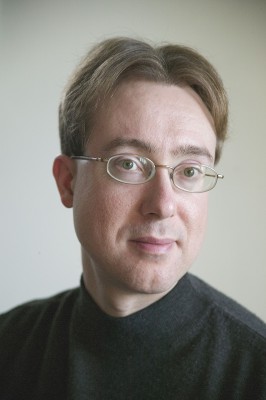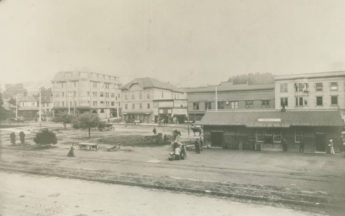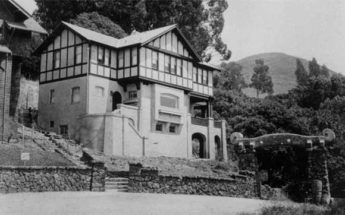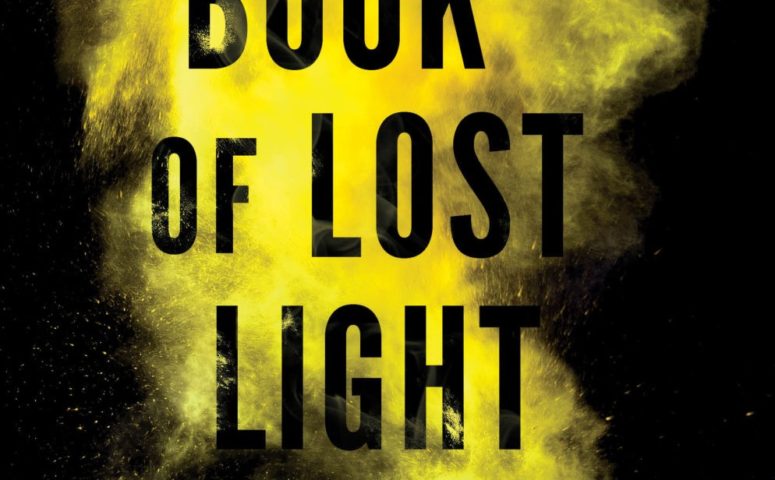Here is an interview with my frequent collaborator and good friend Ron Nyren. We are talking about his first novel which was recently published.

Photo: David Wakely
Q: This novel is about enormous futile gestures in life and about disasters and how they make it almost impossible to continue on the course you were on. Is this the kind of novel that you almost need to be in middle age to write, because by then you can see the epic narrative of a complete life?
A: That may be why it took me so long to write this novel. I was in my mid-20s when I first tried writing a short-short story about someone who grew up being photographed every day of his life. But I didn’t really know who was photographing him or why. It was several years before I came back to it. I needed to grow into the idea. In my 20s, I was still struggling to make sense of my own childhood. My narrator, Joseph, is looking back on his life and trying to make sense of it. The older I grew, the more I was aware of loss and mortality and the defeats that everyone faces as they enter into middle age.
Q: It feels as if each character has a specific purpose. Did you draw a map or diagram so you could keep track of everything? Because in part your novel is about history, it’s about psychology, it’s about sexual attraction, it’s about all these different things. I thought, “How on earth do you keep track of all this?” Maybe that’s an older person’s lament.
A: It pleases me very much to hear you say that every character seems to have a purpose. Because especially in the early years, I was throwing all kinds of characters in there to try to see how it would make sense, and there were just too many.
I put in cameos by Bernard Maybeck and various local photographers of the time, and I think even Jack London made a brief appearance at one point. So many characters came in and out as I tried to find a story. Most of them got winnowed away in the end.
Very early on, I decided I wanted to start in San Francisco before the earthquake, and then have the second half of the book take place in the Berkeley hills as Joseph and his family live in tents in the back yard of his father’s patron. I was interested in the experience of the earthquake refugees and what happens when everything you know has been torn up. How do you put your life back together?
Q: Your novel centers around one huge irony: here is this character, Arthur Kylander, who wants to stop time, and in the process of trying to do that, he becomes unable to exist in the present.
A: I started this novel before digital cameras were ubiquitous, before everyone had a smartphone that turned them into a photographer, and before social media became a part of our lives. As I kept writing, I started seeing parallels between Arthur’s obsessive project and our contemporary impulse to record and share images. We look up from Instagram or Facebook, and an hour has passed. There is connection and community, but we’re also just looking at a bunch of pixels on a screen and having imagined interactions.
Q: Your novel has a lot of information about photography around the turn of the 20th century. Where did you find all that?
A: There are great resources, thanks to Google Books and its digitizing tentacles. I found a lot of early 1900s publications about photography like Photo-Era, Wilson’s Photographic Magazine, and Camera Craft, full of how-to articles.
Q: Were you able to do most of the research from your computer at home?
A: The Bancroft Library at the University of California, Berkeley, has a great online resource called the 1906 San Francisco Earthquake and Fire Digital Collection, including letters, diaries, and photographs. Early on, I also visited the Bancroft Library in person on several occasions to research writers and artists of the time.

Downtown Berkeley c1906
Source: Berkeley Public Library

Smyth House
Berkeley Hills c1906
Courtesy Berkeley Heritage
Q: Was Arthur Kylander’s patron based on anybody?
A: Thomas Hallgarten was inspired by Governor Stanford, who was Eadweard Muybridge’s patron when Muybridge was photographing horses in motion. Muybridge and Stanford had a falling out—Stanford exploited his work without crediting him for his role. I thought the dynamic between photographer and patron would be an interesting one to explore.
Q: Tell me how this epic Finnish poem, the Kalevala, becomes so important to the novel.
A: Originally, I was planning to set the novel in Connecticut in the 1980s, which is when and where I grew up. But when I thought of Muybridge, I realized it made more sense to set it in the Bay Area in the early 1900s. So I decided nothing should be autobiographical. My own ancestry is Swedish, so I decided to go one country over and give Joseph Finnish heritage. The only thing I knew about Finland, apart from Tove Jansson’s Moomintroll books, was a memory of reading, when I was eight years old, about Wainamoinen, a sage/sorcerer from Finnish legend who sailed in a copper boat. Something about the name had stuck in my mind all those years. I Googled it, discovered the Kalevala, and fell in love with it. It’s a wild book of folk songs that Elias Lönnrot gathered in the late 1800s and sort of mushed together to create a narrative. I could imagine a child growing up hearing these tales. And a child being photographed every day of his life might become a little theatrical. So that gave me the idea the characters might end up performing plays based on stories in the Kalevala.
Q: In your research about the post-earthquake Bay Area or the scene in Berkeley, did you come across a Finnish population?
A: Yes. A Finnish lodge was founded in Berkeley in 1911, and the Finnish community hall built the 1930s is still operating in Berkeley. The English translation of the Kalevala was a popular book around the turn of the century. There was a thriving interest in mythology and folktales at the time, and the Berkeley poet Charles Keeler was writing plays based on Greek mythology and having his friends perform them.
Q: Tell me more about the role of theater. The novel moves from photography as a kind of center to exile and theater. Did your research uncover theater as a place to move Joseph’s story to?
A: The initial idea to have Joseph and his family living in a tent in the Berkeley hills came from a book about the Society of Six painters. I read a paragraph about a group of artists who lost their studios in San Francisco, came over to the East Bay, and camped out in the backyard of the novelist Herman Whitaker, who lived in Piedmont on a silk farm. They set up tents in his backyard and told tales and had revelries.

Schneider House
Courtesy berkeleyplaques.org
Q: Given that you have coauthored a book about writing fiction, I am curious to know, what rules did you break?
A: Right from the earliest drafts, Joseph began the novel by describing his father’s experiences as a young man, decades before Joseph was born. Because he wasn’t present for those events, he had to tell the reader how he learned about them, either from his father’s stories or from his older cousin Karelia’s stories, and he had to indicate where he used his imagination to piece together what happened. The signal event of Arthur going to work for Muybridge in 1879 was key to the novel. Arthur created a legend for himself so that he could believe in it, and that became Joseph’s legend, too.
Karelia has her own story unfolding, too, which Joseph is not always present for. It felt to me like a first-person book. So it took a lot of work to figure out how and when Joseph learned what he knew, so that he could tell the reader. That was the hardest craft problem to overcome.
Q: You seem to characterize the writing of this as if you just sat down and explored. But to a reader, it feels, as I said earlier, that there’s so much intention. Everybody is playing their role. That seems in contradiction to the way you characterized the writing at first. That may or may not relate to the epic quality of the book.
A: This went through many, many drafts. I didn’t keep track of how many, but quite a lot of files accumulated in my computer as I tinkered and took out characters and later brought some of them back in a slightly different form. The writing of it was haphazard, but slowly everything came into focus over quite a lot of drafts.
Q: What are you working on now?
A: The next novel that I’m thinking of writing is based on a Greek myth. In The Book of Lost Light, the collection of legends, the Kalevala, is an artifact in the present-day world of the characters. But I want to set the next novel in Ancient Greece and think about how things would have happened if the myth were based on actual events.
Q: From your recent reading, I know that your writing group has been very important. Have you been able to refine your ability to filter feedback?
A: I have been in writers groups for a long time. In my 20s, when I was in writers groups, I wanted to know, are people getting what I’m hoping they will get out of this story? If not, then I would rewrite it.
But after going through graduate school and the Stegner program, I became more open to reconceiving stories rather than just trying to block potential misreadings. I became more interested in enlarging what I was trying to do. And maybe that’s just part of growing up, too—you start to say, “I’m not seeing things with as expansive a point of view as I could have.”
Q: How did you keep that focused commitment for so many years? Did that grow with the project, or was that always with you?
A: I had only written short stories for many, many years. So when I started this novel, I was relieved to be able to write a lot and explore and not have to think about the final draft yet. After trying to refine and rewrite short stories and make them perfect for so long, there was a sense of freedom. Then I fell in love with these characters. The more I got to know them, the more I was interested in what they were going to do and what stories they wanted to tell. That kept me going during the times where I was baffled about what would come next. When you’re writing a novel, it’s like tightrope walking—it’s best not to look down.
